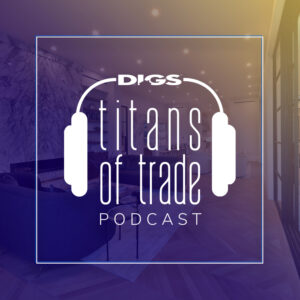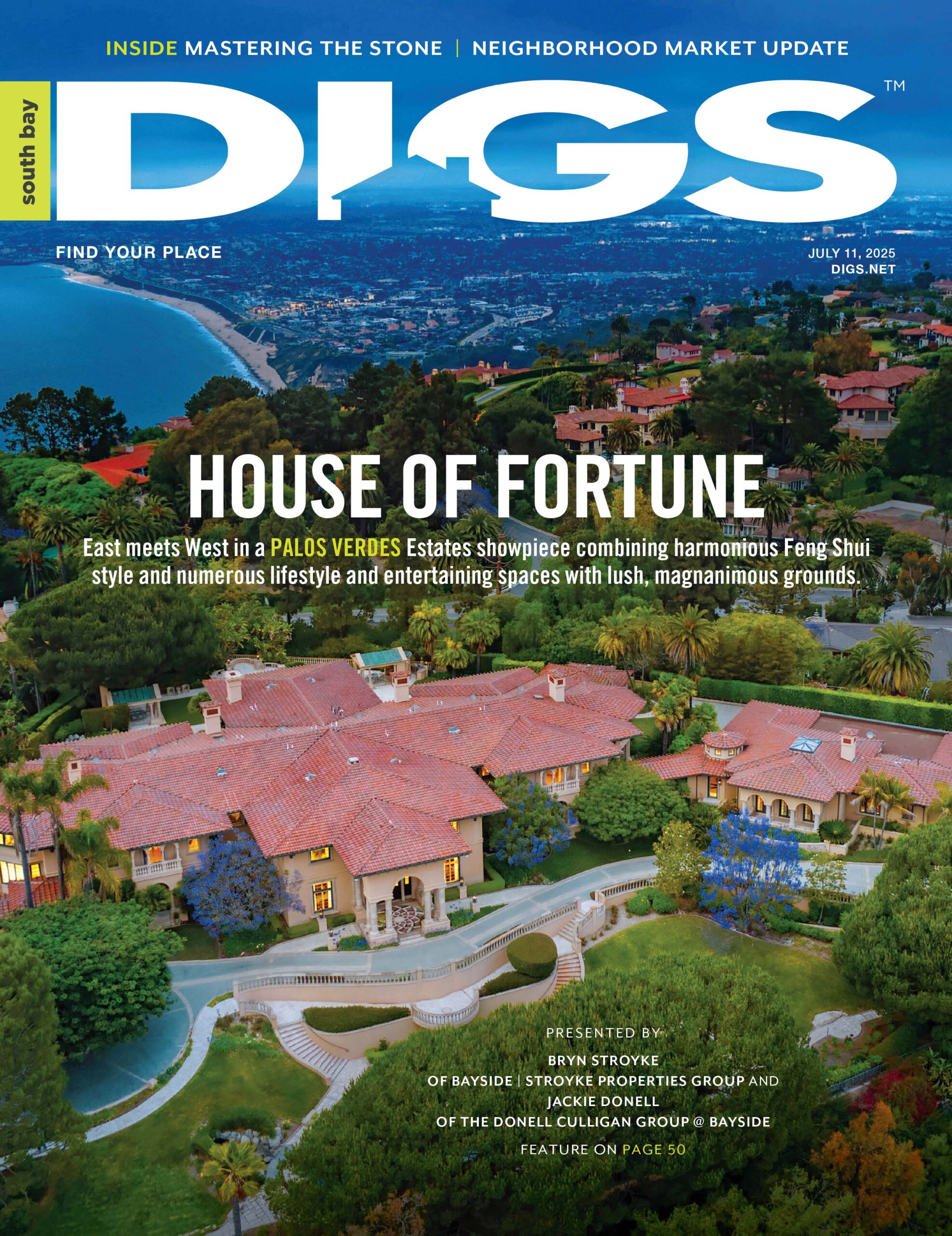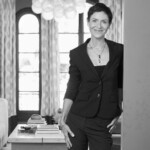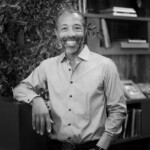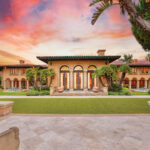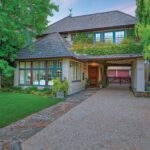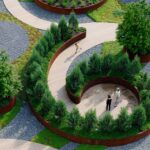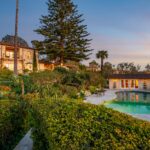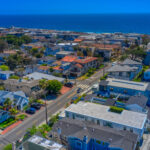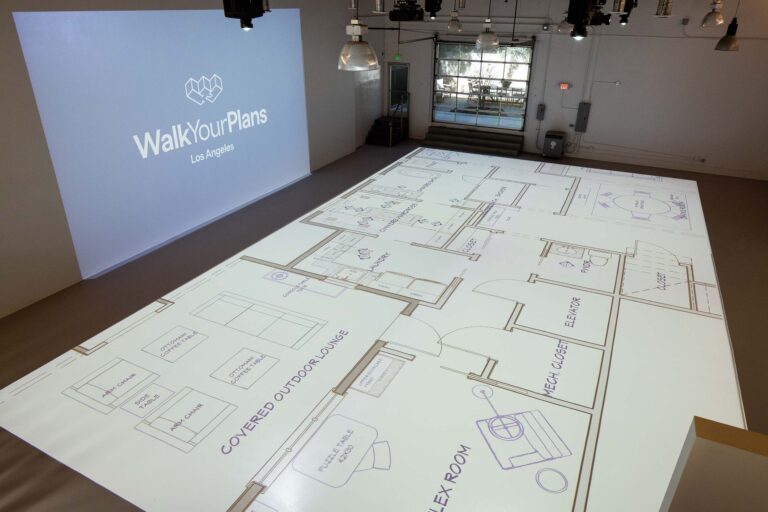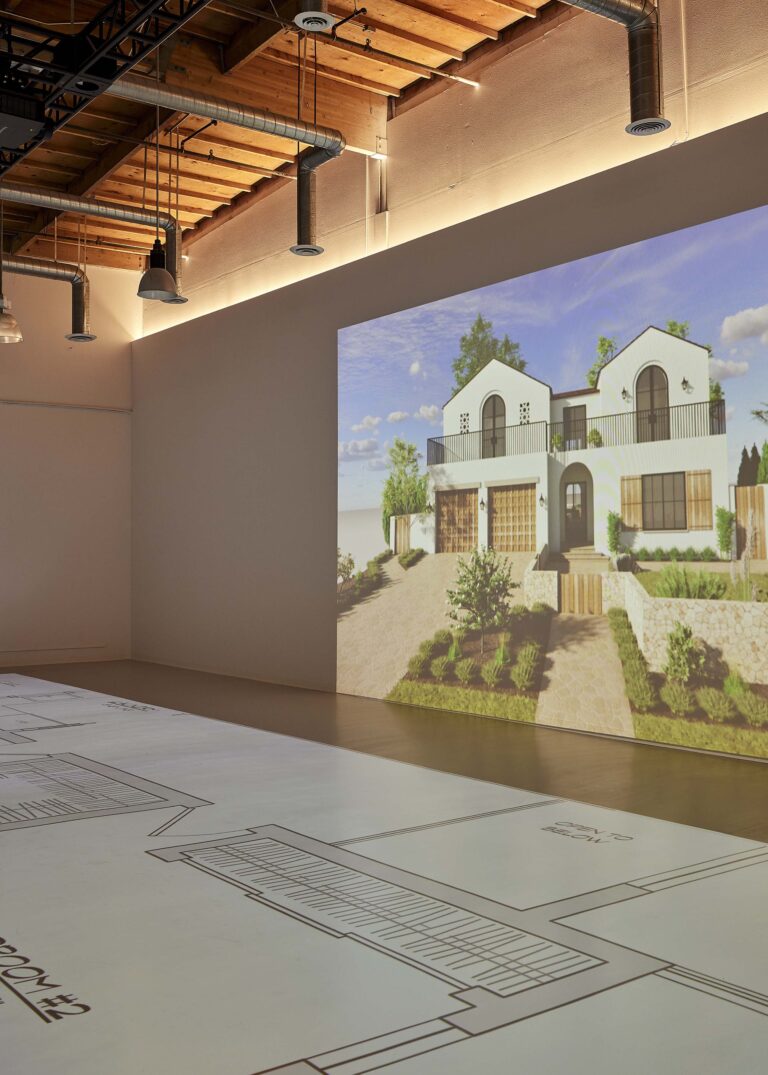In this Episode
Welcome to another exciting episode of Titans of Trade! In this edition, we have the pleasure of introducing you to the brilliant contemporary architect, Duan Tran. Join us as we delve into a captivating discussion spanning over two decades of his remarkable career in award-winning residential architecture.
Duan Tran, a partner at the renowned KAA Design Group in Los Angeles, will share insights into the firm’s distinctive design philosophy and their enduring success in the industry. Discover how they’re seamlessly transplanting the quintessential California contemporary aesthetic to far-flung corners of the globe.
Intriguingly, we’ll explore the fascinating intersection of artificial intelligence and technology with architecture. Duan will enlighten us on the cutting-edge advancements that are pushing the boundaries of what we perceive as the future of architectural design.
Duan Tran’s journey has taken him from luxury contemporary residences in Southern California to exotic locales like Dubai, Washington D.C., the West Indies, and Costa Rica. Known for their signature California Contemporary style, KAA Design Group’s projects are intricately woven with the essence of the land, climate, and the unique lifestyles of their clients.
Join us as Duan Tran reveals the intimate process of creating homes that are more than just buildings; they are physical embodiments of their owners’ personalities and lifestyles.
Duan also shares the secrets behind KAA Design Group’s impressive 30-year success story, which was founded by partner Grant C. Kirkpatrick, renowned author of “California Contemporary: The Houses of Grant C. Kirkpatrick and KAA Design.”
Discover how KAA Design Group assembles super teams, composed of individuals excelling in specific facets of design and construction, to create architectural masterpieces. Duan Tran will explain the meticulous approach of nurturing exceptional talent within the organization and harnessing their skills to achieve architectural excellence.
As a Partner at the firm, Duan’s vision and leadership extend to management, project design, and firm-wide initiatives. Learn how his strategic guidance shapes the firm’s ability to adapt to an ever-changing industry and clientele while honoring its rich 30-year history.
Furthermore, we’ll explore Duan’s artistic sensibility, deeply rooted in modern composition and form, and how it intersects with the ideals of his engaged and passionate clients in the design process. Discover some of his most notable projects recognized by the AIA and featured in esteemed publications like Architectural Digest, Luxe, and the Robb Report.
Duan Tran’s journey began in Ohio, where he earned his undergraduate degree from Miami University, followed by graduate degrees in Architecture and Historic Preservation from the University of Southern California. Prior to joining KAA Design, he gained valuable experience at distinguished residential and hospitality firms in Ohio and Washington, D.C.
In addition to being a licensed Architect and a member of the AIA, Duan Tran’s influence extends to various design and industry roles. He is part of the prestigious Leaders of Design Council, serves on the Board of Directors for the A+D Museum in Los Angeles, and contributes to the Advisory Board for Miami University’s College of Creative Arts. Duan’s expertise has also been sought after on academic design juries and as a guest panelist for prominent design and industry media events.
Outside of his professional life, Duan and his wife indulge in their passion for travel while keeping up with the adventures of their three active daughters in Culver City.
Don’t miss this enlightening conversation with Duan Tran, a visionary architect shaping the future of contemporary design. Tune in now and immerse yourself in the world of architectural innovation, creativity, and passion!
Full Episode Transcript
Constance:
Welcome to Titans of Trade. I’m your host, Constance Dunn, and today we welcome a notable architect who’s not only an architect, but a partner at design agency, KAA Design Group in California. Welcome to On Trend.
Duan Tran:
Thank you, Constance.
Constance:
And you know, it’s funny because I was thinking of introducing you because you are an architect and I was like, oh, maybe a California contemporary architect. But increasingly, and kind of your origins are not just like a California contemporary guy in terms of architecture.
Duan Tran:
Right, right. Yeah, no, so I started my career actually in the Midwest. I’m a Midwestern boy that transplanted
Constance:
Uh-huh.
Duan Tran:
to Los Angeles 25, 30 years ago. Can’t believe I’m saying that, but I guess
Constance:
Yes.
Duan Tran:
that’s true. So, but yeah, you know, it’s funny for a lot of different reasons I came out here, partly first of all, just for school. I went to USC for graduate school and spent a couple of years there. And my intention at that point in time was to do a couple of years on the West Coast. kind of absorb and take in the California lifestyle. And obviously the architecture and design industry is so strong here, but then probably go back to the Midwest or the East Coast where most of my family and friends are. But, you know, like so many people, best of intentions, you know, and things changed. And I ended up at a wonderful firm that I’m still at obviously as a partner now, KAA Design, and built up a wonderful relationship with Grant Kirkpatrick, who’s the founding partner. And over the years have just kind of really found myself invested in what we do and growing with the firm and then really believing in, you know, the kind of work that we’re doing, especially in our community and everything. So it’s been a joy and actually kind of given me a little bit of a second life here thinking now that I’m actually probably more California than not, then uh,
Constance:
Great.
Duan Tran:
to be able to kind of operate as an architect, especially in this sphere. So.
Constance:
Right, and I’ve written about a lot of KAA designs, a lot of homes. I’m very familiar with kind of, I’ve figured it out. I think I’ve figured it out what you do. And in many ways, you guys are known as like very high end California, but increasingly you guys are moving abroad, Dubai, Costa Rica. You’re doing work in other like climates and territories, which is significant given how much emphasis it’s really the focus, the land is the main, is the star of the design in many ways. And Kieran, if you don’t mind just throwing up maybe, I’m just going to put up Dubai because it’s very dramatic. So I’m curious. I don’t know if there’s a question there, but if that inspires you, like what you guys are doing, increasingly it’s not a California firm, right? Or… It
Duan Tran:
Yeah,
Constance:
is in ways
Duan Tran:
it’s
Constance:
not.
Duan Tran:
true. Well, it is, it is, and it isn’t, and it’s something that, you know, we’ve, we’ve talked about at the highest levels because in a way we never, we never aspire to do work outside of California, because like you mentioned, we were very comfortable as a Southern California firm. There’s so many great opportunities here. The climate is, is so conducive to the kind of work that we do, especially on a modern end. But what’s
Constance:
Mm-hmm.
Duan Tran:
been interesting over the last few years, and I would say the last four or five in years in particular is that there’s a certain notion. And we’ve been able to understand this even especially after we put our most reasonable called California contemporary is that there’s so many parts of the world or even nationally where people think of California as an adjective. That’s how the ascribe things. I want a Californian that, that. And when we started to dig further into it, it transcended the fact that it had to be Los Angeles based or San Francisco, but there were certain themes and design values that people even outside of Southern California were appreciating. You know, notions of warm modernism, notions about lifestyle-driven design, notions of just contextual materials and a connection to nature. And those kinds of things, which we’ve been able to adopt and kind of use as our DNA as kind of Californian architects, it’s been fun to be able to explore as people from Dubai, folks in Washington, DC, you know, places in Costa Rica, where our clients have come to us. and have asked us to interpret that California lifestyle in these different client climates. So in particular here, this, this project that you brought up, uh, which is really kind of a special one for us that we took on about three or four years ago. And actually they’re just starting to get construction. So it’s going to be just to see how this thing works out. But this is a project in nearby. It’s a significant Villa, uh, with exhaustive, uh, landscape site amenities. And for this particular client, They were wanting somebody with a California or international flavor. I mean, there’s definitely an aesthetic that currently exists in Dubai that’s not very Westernized. There’s a lot of traditional values and an architectural vernacular that exists. And so what they were looking for was somebody who was able to promote a lot of these Western values about use of material. How do we open up the house? How do we explore and push out the massive of the house? Can’t leave her ease things that like these kinds of elements that really pushed the ideas of California optimism. And so
Constance:
Mm-hmm.
Duan Tran:
for this particular client, thankfully they had a sort of wherewithal to be able to explore that and to tap onto us. But this was a great example about how we were able to interpret those California elements into what is a very different environment culturally as well as climatically. And we’ll see how it works out, but we’re very excited and the clients are very pleased and I think very much looking forward to seeing this project complete in the next couple years.
Constance:
Right. It’s quite dramatic and grand, yet it’s very much a KAA house. And those watching on
Duan Tran:
Yes.
Constance:
YouTube, of course, can see this. And one of the things I’ve always noticed about you is that I could mention, you know, 2201, the strand, you know, just some address, and
Duan Tran:
Hehehe
Constance:
you’ll know exactly what I’m talking about.
Duan Tran:
Right.
Constance:
You’re an architect, but I have admired that you run a very I could say famous firm. When I have
Duan Tran:
shit that.
Constance:
spoken with you, you’ve always very calm and you’re very
Duan Tran:
Hehehe
Constance:
focused. So for people that the thought of doing those, both of those worlds, you plan the initiatives of your firm, you run, you have a lot to do with KAA Design Group as an organization, how that organization is going to. be structured, how it’s running on a day-to-day basis and in the future. So how do you parse those in your mind? Like, do you
Duan Tran:
Hmm.
Constance:
keep them separate? Like, how do you do this wide
Duan Tran:
Yeah.
Constance:
variety of things every day?
Duan Tran:
You know, listen, it’s such a great question. And I mean, as you know, it’s hard to be successful in this business for the longevity of it. And oftentimes, because most architects or designers, it’s the whole left right brain thing, right? Either
Constance:
Really?
Duan Tran:
you’re creatively inclined or you just have a more business like sense. And it’s pretty rare that you get to put that together. But I think that’s kind of what’s unique about us. You know, I would say between my partners, Grant, Eric and I, is that, you know, I think the way that we see it, I mean, there’s no doubt. I think our heart of hearts, we’re all designers. We’re all very creative. But we’ve never seen the business part of the firm as a means to an end, or it’s just something to be done. And I do think that there are a lot of architecture design firms that see that as a means to an end. There’s a complete set of people that
Constance:
Hmm.
Duan Tran:
work on that, that work on the business aspects, and then there’s the creative. But we’ve kind of taken a much more progressive approach about it is to think about how do we actually design the firm. And for us, there’s this cultural thread about pushing ingenuity, being creative about not only about how we design, but how do we structure our organization in terms of the fees? Who do we hire? It’s almost like another design project, right? Versus
Constance:
Hmm.
Duan Tran:
a business decision per se. And so, you know,
Constance:
Oh.
Duan Tran:
I can’t say that it’s been perfect. There’s a lot of risk versus reward versus that. But
Constance:
Mm-hmm.
Duan Tran:
for a firm like ours, that’s been able to be able to kind of tap on and really push on different ideas and think about designing certain aspects of our firm to really be conducive to allow us to do better design work has been, has been monumental and we’ve seen the, the traction of that over the last 10 or so years. And so in particular, for example, you know, um, when we hire somebody, there’s kind of an initial idea. Well, course we want to hire a well-rounded architect. You know, somebody that does a little bit of everything very well. And it’s generally a very safe approach, right? We all want somebody that’s well-rounded, that doesn’t have, say, a blind spot. But for us, there’s times, and we’ve been, you know, exposed to some really interesting young architects. Either they’re amazing designers, either they have amazing rendering skills, or they’re visionaries, or they’re amazing communicators. They have almost a certain superpower. And
Constance:
Hmm.
Duan Tran:
what we do, those are the people that we’re really interested in hiring, right? It’s about how do we bring people in that have certain, a certain amount of elitism or exceptionalism in terms of skills get, and how do we
Constance:
Hmm.
Duan Tran:
nurture that? And then be able to put that together with other people with elite skills. And so it’s caused us to develop our team in a way where we have some very focused specialty skills, people that bring elite talents to our design process. that will ultimately render projects like Dubai. And we’re only able to get there because we’re able to put that together with the team that we have. And that’s a very different result than if we hired somebody that, you know, they might be a great three-dimensional visualization expert, but they’re missing this component of it. And so all of a sudden, you know, somebody, that person might not be as attractive because they’re not as well-rounded. Well, for us, it’s very exciting for us to find somebody who has an exceptional skill. and then figure it out within our team environment about how to push that and design that, uh, professional development career path with them. So, so that’s kind of one example about how we approach things.
Constance:
Uh huh.
Duan Tran:
It’s, it’s definitely not to separate the two, but we do see running the business as a design project in many ways. So.
Constance:
That’s a really great approach. And it’s probably one that is really mindful of the resources of how much mental energy can be expanded when you separate or compartmentalize tasks. If you have to say,
Duan Tran:
Yes.
Constance:
OK, yeah, I’ve been working on these plans, and now I have to go think about
Duan Tran:
Right.
Constance:
some internal issue, or OK, that makes a lot of sense. And I like your idea of assembling a superhero team. because
Duan Tran:
Yeah,
Constance:
that’s consistent
Duan Tran:
exactly.
Constance:
with the type of work that KAA produces, which is
Duan Tran:
Right,
Constance:
very kind of
Duan Tran:
right.
Constance:
like heroic looking, not just visually, but also with the materials. Like I wrote about a Strand Home and I cannot remember the address of it, but it’s like the board form concrete. Cause the real estate agent I was talking to was talking at length about the board form and he in fact has
Duan Tran:
Right.
Constance:
a KAA design home. This…
Duan Tran:
Right.
Constance:
and was talking about this material. And could you tell us what that is? Like, could you define this one? It’s a very unique, it’s kind of unique to
Duan Tran:
Yeah,
Constance:
you guys.
Duan Tran:
absolutely.
Constance:
Or it’s,
Duan Tran:
Yeah,
Constance:
yeah.
Duan Tran:
so the use of board form concrete has actually become one of those go-to materials for us. And we love it for a lot of different reasons. I mean, one, there’s a structural integrity to it. So most of the homes, especially nowadays, in order for them to pass engineering requirements, there’s just, there’s a certain level of requirement that the city requires for those things. And so oftentimes, because of the heroic nature, as you say, of our homes, where there are large expanses of glass and less walls, those walls have to be designed in a way where they’re really structurally strong. And so concrete ends up being kind of a go-to for us. So then with that, most other architects, somebody might go, well, concrete’s an ugly material. Who wants to see
Constance:
Mm-hmm.
Duan Tran:
it? Let’s cover it up. Let’s paint it. Let’s plaster it over. But we’ve taken a different approach, which is let’s celebrate it. Let’s honor the fact that it’s a concrete, beautiful wall. And maybe there’s a way to play with the board forms, which is how they actually create the… So they basically use wood boards, pour concrete into it, and they pull off the wood boards. And that’s what gives the natural graining effect. And there’s a lot of different versions of that. And you can play with vertical, horizontal, random, in and out. There’s a bunch of different ways that different architects are going to play with it. But what it’s done is it’s an opportunity for us to embrace the integrity of the use of the material for what it is, but also make it beautiful. right? Not make it an ugly raw concrete wall, but bring some natural organic qualities to it. Where people are now actually seeking that out. They actually want board formed concrete walls. They see that as a beautiful element, even though on the surface people might go, wow, why would you want an exposed concrete wall in your living room? Doesn’t that feel cold
Constance:
Right.
Duan Tran:
and, um, you know, uh, unapproachable. So,
Constance:
Great.
Duan Tran:
so for this particular project, as you mentioned on the strand, that was definitely the case in point. The clients really gravitated to it. But speaking about just team members, so on that particular project, we had a team member that had extraordinary experience doing board form concrete, because they had spent some time working with a general contractor a few years in a prior life before coming to K.A. So we were really able to explore and push the ins and outs about how to really exploit that as a design material versus just kind of mail it in and just say it’s a structural wall. And so we would have probably never gotten there had we not had that team member on that project to bring that certain level of expertise and passion to the effort. And so that’s just one quick example about being able to tap into people’s skillsets and expertise and personal passions.
Constance:
Uh-huh. Yeah, I love that. And for this home, I recall that the homeowner or the client had said, and this is through the agent, said something to the effect of, because it was gonna be a family home, a beach home. Like it was gonna be used and abused every day. And she had
Duan Tran:
Right.
Constance:
said something to the effect of, if a herd of elephants came through here,
Duan Tran:
Right.
Constance:
I would want it to look just as good. And the interesting thing about this home is that I remember it was completed and I, again, don’t. it had been completed a while back, yet it looked like brand new, like out of the box. So again, to what you’re saying with this particular material. And I love this idea too, of where you’re going to exploit this material that some might hide away. And it reminds me of like a Frank Lloyd Wright or a Neutra or even like Rourke
Duan Tran:
Right.
Constance:
from the Fountainhead of like. It’s like a building must be like a man. Like you can’t be ashamed and hide
Duan Tran:
Right.
Constance:
things. Do you know what I mean? Like you’re putting it out there, right?
Duan Tran:
Yeah.
Constance:
And exploring and positively exploiting this material that some might wanna tuck behind some kind of other material. So
Duan Tran:
Yeah.
Constance:
that goes, I
Duan Tran:
And
Constance:
think.
Duan Tran:
it’s exactly,
Constance:
Yeah.
Duan Tran:
yeah. And it’s exactly that point. I mean, we’re, we’re fundamentally, we, we generally be at the leave of the integrity and the authenticity of the use of materials. And so
Constance:
Right.
Duan Tran:
it’s pretty rare that we’ll do something that’s say manufactured or fake. Um,
Constance:
Uh-huh.
Duan Tran:
you know, a client would need to push us to that another Reno. There would need to be some, you know, overwhelming reason to do that. And so, you
Constance:
Right.
Duan Tran:
know, even at times where again, a strand beach home, this one in particular that you’re talking about has wood siding. And everybody
Constance:
Mm-hmm.
Duan Tran:
on the channel will say, why are you using wood siding? And that’s not going to last
Constance:
Right.
Duan Tran:
more than a year or two. Well, but we, as well, the client believe in the authenticity of, listen, if we’re going to use wood, it should be real wood. And we just really embrace and know that we’re just going to have to upkeep it every year or two. It needs to be refinished. It’s like keeping your car, getting your oil changed. It’s just, there’s certain
Constance:
Great.
Duan Tran:
things that you need to do to maintain it. But for them, that was important to live in a piece of architecture that was authentic versus something that was. say fake or manufactured. And, you know, that’s, I think that’s one of the elements that I think we take a lot of pride in is, is knowing that there’s a certain level of craft and authenticity and integrity that comes with our work that’s maybe less manufactured at times. So.
Constance:
Right, right. Now to your superpowers, one of the things I noticed about you is you are like Midwest, East Coast, I think you worked in DC,
Duan Tran:
Yeah.
Constance:
and you also have like a certificate from USC, you have a certificate in like historical preservation. Is that accurate? Is that what
Duan Tran:
Right.
Constance:
it is? Right, right,
Duan Tran:
That is, yeah, yeah.
Constance:
right. So that’s interesting. May I ask some of your kind of first architectural loves? Like I always loved the breakers. You know what I mean? Up in
Duan Tran:
Yeah,
Constance:
Rhode Island,
Duan Tran:
right.
Constance:
Newport, there’s a certain colonial architecture, that type of a thing. And since you have that background in historic works, I’m curious.
Duan Tran:
Right. Yeah. You know, it’s interesting. I, so it’s something that I, I fell into during my year two, when I was in Washington, DC, you know, prior to
Constance:
Great.
Duan Tran:
moving out to Los Angeles. And I’ve always appreciated history just as a side note, but when you’re immersed
Constance:
Mm-hmm.
Duan Tran:
in an environment and a community like Washington, DC, where,
Constance:
Great.
Duan Tran:
I mean, literally every other building you walk into, George Washington slept here or Abraham Lincoln had a drink here. You start to appreciate the value
Constance:
Mm-hmm.
Duan Tran:
of that. And,
Constance:
Right.
Duan Tran:
you know, there’s things obviously like Mount Vernon and Monticello, when you get to experience these things and you realize that, you know, I’m fortunate to be able to, and so many other people of our generation are able to visit it, but if somebody didn’t keep these things and, or there weren’t structural rules and guidelines on behalf of the government to protect these buildings, this history would be lost and that would be a failure. And so
Constance:
Mm-hmm.
Duan Tran:
I really appreciate it and began to develop the sensitivity to that. And so that became one of my course curriculums when I went to USC was to essentially get a minor, they call it a certificate, but a minor in historic preservation as part of my architectural master’s degree. And for me, that was really fun to explore because very different than the East coast. When somebody thinks of something historic in Los Angeles, it’s 40 years old. It’s not 200 years old. right? And but what that did was it really caused me to take a look at what historic meant in Los Angeles, which was essentially to lead to a lot of the modern case study houses of Noitra and Schindler and the mid-50s, mid-60s modernism, which is historic for Los Angeles. And
Constance:
Yes.
Duan Tran:
it gave me a new love and appreciation for West Coast modernism, which is kind of where… I think when I look back and I go, geez, what’s anchoring me as an architect today, as a warm, modern, contemporary architect, it’s really kind of that fundamental appreciation for what happened 50, 60 years ago and
Constance:
Hmm.
Duan Tran:
understanding and really valuing the wonderful architects and their design point of view and the aesthetics that came out of that.
Constance:
Yeah.
Duan Tran:
So historical preservation in a way is kind of where I came from, but now taken in a different environment of Southern California. being able to kind of push that forward in a much more current world.
Constance:
Yeah, especially I think with the materials like Dionne Neutra, we had the opportunity prior to his passing, he lived in one of his father’s original
Duan Tran:
Mm.
Constance:
designs, I think it was called the reunion home, Silver Lake, so we got to do some filming there and it was very really wonderful and one of the things to even see like the sliding glass, you know, it was The father
Duan Tran:
Hm,
Constance:
had created
Duan Tran:
right.
Constance:
this for the family to kind of come together and hang out. And really, Dion had kept it very authentic. It was still very user friendly, you know, many decades later. But I, but I do think it’s wonderful to see all the innovations, particularly in, like, for instance, glass that makes those
Duan Tran:
Right.
Constance:
the dream of what a Neutra had, you know, or the people
Duan Tran:
Mm-hmm.
Constance:
coming out of the Bauhaus, you know, like 1920.
Duan Tran:
Right.
Constance:
that they’re able to realize the philosophical visions. There’s just a lot happening technologically and I’m curious if there’s anything kind of floating your boat lately that’s just happening on the
Duan Tran:
Aw man.
Constance:
tech front or materials or.
Duan Tran:
Yeah, well, absolutely. I mean, there’s so much and it’s crazy to think, it does feel like there’s this digital renaissance right now. I mean, we always know that things are escalating, there’s new things and gadgets that are coming up. But I would say in the last year or two, not only within our design industry, but worldwide, but just the impact that AI has. I mean, I think everybody
Constance:
Ah!
Duan Tran:
at this point in time knows what chat GBT is and things of that
Constance:
Yeah.
Duan Tran:
level. But for us and how it applies to our, our technology and kind of how our design process worked is It’s allowed us to standardize and modernize a handful of different parts about what we used to do by hand and or, uh, need to, uh, our process to come out of the box, thinking about different creative ideas, there’s shortcuts to be able to spur new ideas that we may not have thought about, you
Constance:
Hmm.
Duan Tran:
know, uh, artificial intelligence is helping with that. Just kind of being able to, you know, like, it’s almost like using Google and just typing in, you know, show me something heroic and cantilevering over an ocean. And they’ll spit out 50 different images. And in a way they’re almost like inspirational. It’s like Pinterest, right? It’s just a different way of using it, but it’s pushing us and allowing us to tap into resources and new ideas that we otherwise, it would just take us a little longer to get to. So
Constance:
Oh.
Duan Tran:
I think things like that are really starting to further promote new ideas in design
Constance:
Hmm.
Duan Tran:
as a whole, but within architecture, I think you’re going to see residences or buildings start. very different. Gone are the
Constance:
Really?
Duan Tran:
four walls of the flat roof. I think you’re seeing things that are much more organic now, things that feel like they blend into the environment. There’s just a lot of different ideas right now that are permeating, primarily because we’re not so much in our head anymore and stuck with what we know as historical presidents that there’s computers and artificial intelligence right now that are kind of pushing the envelope about what we can now conceive as what a new building looks like. So like, for example, if, you know, if we were to do another project in Dubai, it would be interesting to, you know, figure out through AI, well, what is a modern, warm contemporary residence looks like in Dubai? And I’m sure it would spit out something fantastical, right? Just an image, an inspirational image, an artist rendering. And then it’s just enough to be able to spark something that goes, huh, I never thought about doing a swoopy roof, but that works because they’re playing off of the sand dunes. I don’t know. you know, whereas we might be stuck with some other kind of ideas that we’ve just, you know, always had in our minds. So I think
Constance:
Right.
Duan Tran:
technology in general, it’s going to be this incredible thing that continues to push, you know, not only our industry and profession moving forward, but the world. There’s no doubt
Constance:
Great.
Duan Tran:
it’s making an impact already.
Constance:
Well, so much of what KAA does is, again, considering the landscape, the climate, the outdoors, that’s like a starring role. And, Kieran, if you could put up a picture of the Costa Rica project. Also, you guys have done a project, was it in Bermuda or the Bahamas, like island work as
Duan Tran:
Yeah,
Constance:
well?
Duan Tran:
right.
Constance:
Which must
Duan Tran:
Barbuda,
Constance:
be a trip.
Duan Tran:
yes.
Constance:
Yeah, which must be
Duan Tran:
It
Constance:
a
Duan Tran:
is
Constance:
trip.
Duan Tran:
a trip. Yeah, no. Yeah, literally, it’s a trip to get to get
Constance:
Yeah,
Duan Tran:
there.
Constance:
I imagine. And so I have a couple Costa Rica images, but you can also go to KAA Design, your website as well, as you guys do a great job of having that on there. So the idea of having kind of an island residence, and I think in this case, you guys did such a great job of that. I know it’s that word of seamlessness, but of like, again, just even making the outside, not just having it be invisible, but making it grander in a sense. Like being able to appreciate
Duan Tran:
Right.
Constance:
the virtues of the outdoors while you’re inside in a way that you wouldn’t even if you were sitting on the beach.
Duan Tran:
Right. Yeah. And in that project in particular, the Costa Rica project you mentioned. So that project was really fun because again, I mean, it’s not so different from say, Southern California, because in a way the climate, the terrain, there’s things that I think they’re similar, but it does take a little bit of a different approach. And so for that particular project, you’ll see through maybe a handful of renderings and images that you
Constance:
Yeah.
Duan Tran:
have is that, you know, the house aesthetically. looks like a Los Angeles home and has some very modern lines, some of the detailing, the form is, it’s not unfamiliar to what we would have seen. But what’s really different and fun for us was that house sits on a very, um, severe terrain with very vertical trees that pop up into it. And so, you know, one opportunity would have been, let’s just kind of sit there ourselves into the terrain and then you’re just looking out onto this beautiful vista. But our clients wanted to be a little more adventurous and really push the idea of having these massing volumes, the living room, the bed, cancer
Constance:
Mm-hmm.
Duan Tran:
lever out into
Constance:
Yes!
Duan Tran:
the tree canopies. And so it creates this very dynamic structure that one acknowledges that we’re on a sloping hillside, but also has a little fun and levity that says, hey, we wanna push these parts of the building out into that tree canopy over there. And so it takes a little bit of a different mindset for somebody to go, that’s kind of cool and fun to be able to push something out versus, you know, let’s kind of stay back, stay conservative and let’s just kind of. take advantage of this wonderful view. So that project
Constance:
Right.
Duan Tran:
is all about creating this dynamic element and form and connection to the site based on how we’re reaching out, can a lavering, but also kind of playing into the hillside and the terrain that kind of rolls away from you.
Constance:
Right. Are you surprised that architecture has held you for this long? Like, whatever
Duan Tran:
Hmm.
Constance:
you speak about it, you’re always very, you seem to enjoy, I mean, you obviously are very good
Duan Tran:
Yeah.
Constance:
at communicating about architecture
Duan Tran:
Hmm.
Constance:
and about projects. And are you surprised you’ve loved it this long? If you do love it, I don’t want
Duan Tran:
Ooh,
Constance:
to assume.
Duan Tran:
great question. You know what? I’m not surprised. And I would say it’s just maybe a testament to what I really appreciate about our field is that you do have to stay nimble. You do have to embrace change.
Constance:
Mm-hmm.
Duan Tran:
And again, it’s probably one of the hallmarks of what makes us great firms successful for five years for some reason they fizzle out. for the firms that
Constance:
Right.
Duan Tran:
are longevity firms, right? And you see this with, especially in the creative and design industry, some people get very fixated on a certain style and they just can’t move beyond that. And essentially that style is not in vogue anymore. People are not interested in that fashion, right? And so all of a sudden they just kind of go away. And it’s the same thing with architecture. For us, how we’ve been able to stay nimble is just. by staying ahead of the trends, not being trendy. I mean, there’s certain things that we’re doing that are probably consistent and maybe for somebody that looks at it as like kind of trendy, but I think we always try to think beyond that. How do we reinvent ourselves? How do we do board form concrete in a different way next time? Let’s not do it the same way we did it before. How do we use new material? How do we export this California philosophy to Dubai? How do we reinvent what it means to live in a house, but now you live on a hill? There’s all these different things that I think we present to ourselves as challenges that make every project new and unique. And I would give a lot of credit to just even a little bit of our business platform in that, as you know, that we do exclusively residential homes, but beyond that, it’s only for end users. I would say probably in the 25 years I’ve been with a firm, we’ve done one spec home, and that was an exception because we had a client who we were actually doing an end user home for. wanted to kind of do an investment property. But in saying that, the reason why we always work with NUs as a primarily is that there’s a certain relationship that you have with a client, that if you’re doing their home, it’s very different than working for somebody who’s trying to flip a property or working with a board of directors that’s trying to do something for a different financial goal. And because of that and the way that our process works, every one of our projects has our client’s DNA in it. I mean, that’s why when you look at our work and our portfolio, it’s very different. I mean, there’s certain common design threads, but aesthetically, they all represent different aspects of our clients’ personalities. That’s what makes it fun because you know that every single one of our projects is a prototype. So,
Constance:
Yeah.
Duan Tran:
Grant and I kind of joke a lot about that. It’s a tough, crazy way to run a business where you’re basically doing a prototype every time you do a project,
Constance:
Right.
Duan Tran:
but it’s also what makes it fun. And to your point, it doesn’t get boring. even after 25
Constance:
Yeah.
Duan Tran:
plus years.
Constance:
Right. And I can see how it’s what you said is true. If you look through the portfolio of work, everything is it’s very exciting. Like the
Duan Tran:
Yeah.
Constance:
I understand what you’re saying how sometimes there’s a designer and the look of the homes and it’s lovely. You know what I mean? They just tend to have a certain look and then you go okay that’s I can see how that’s from like the late 90s or you know what I mean? But yours
Duan Tran:
Right.
Constance:
you’re firm, your work is always fresh. And I know there’s more to explore there because some of these things are paradoxes, right? But they work.
Duan Tran:
Right.
Constance:
And
Duan Tran:
Yeah. And
Constance:
I know,
Duan Tran:
it’s,
Constance:
I’m sorry,
Duan Tran:
yeah.
Constance:
go on.
Duan Tran:
No, go ahead. I’m sorry. No, and I only mentioned that because of the paradox, as you mentioned, is that, you know, oftentimes, sometimes our clients will come to us because of what they’ve seen and they would like the same thing-ish, but we’re always pushing them to do something different. So that is the paradox is kind of, even
Constance:
Right.
Duan Tran:
though this is what people know us for, they still want something new and unique.
Constance:
it’s like a custom dress or a suit. It’s like, you know, I saw
Duan Tran:
Right.
Constance:
this dress on this lady and I want one and you’re like, yeah,
Duan Tran:
Right.
Constance:
but your coloring is different and you know,
Duan Tran:
Right.
Constance:
it’s not gonna work
Duan Tran:
Exactly.
Constance:
as much. I could see that. And I’m back to the historic preservation. I had to laugh when you were talking about how
Duan Tran:
Hmm.
Constance:
you came out to the West Coast and there were things that people were talking about being like antique or you know what I mean, of historic
Duan Tran:
Right.
Constance:
property because I’m from I grew up in a very old house, family house, and around a lot
Duan Tran:
Mm-hmm.
Constance:
of antiques and things from the 1700s and 1800s, family things.
Duan Tran:
Wow.
Constance:
And I remember I came out to LA and it was like, oh, it’s a antique store. And it’d be like, no, dude, that’s like a Starsky
Duan Tran:
Ha ha ha ha ha ha ha ha ha ha ha ha ha ha ha ha ha ha ha ha ha ha ha ha ha ha ha ha ha ha ha ha ha ha ha ha ha ha ha ha ha ha ha ha ha ha ha ha ha ha ha ha ha ha ha ha ha ha ha ha ha ha ha ha ha ha ha ha ha ha ha ha ha ha ha ha ha ha ha ha ha ha ha ha ha ha ha ha ha ha ha ha ha ha ha ha ha ha ha ha ha ha ha ha ha ha ha ha ha ha ha ha ha ha ha ha ha ha ha ha ha ha ha ha ha ha ha ha ha ha ha ha ha ha ha ha ha ha ha ha ha ha ha ha ha ha ha ha ha ha ha ha ha ha ha ha ha ha ha ha ha ha ha ha ha ha ha ha ha ha ha ha ha ha ha ha ha ha ha ha ha ha ha ha ha ha ha ha ha ha ha ha ha ha ha ha ha ha ha ha ha ha ha ha ha ha ha ha ha ha ha ha ha ha ha ha ha ha ha ha ha ha ha
Constance:
and Hutch lunchbox. That’s not an antique. Yeah, I’m like, is it from, is this like, if it’s Paul Revere’s time, then that’s an antique.
Duan Tran:
Hahaha
Constance:
So it was just… But it just made me think of it, especially with your background in historic preservation. Is there a, I don’t know, a genre, architecturally, that kind of is interested you that is historic, beyond California?
Duan Tran:
Mmm.
Constance:
And I know what you’re saying about the California historic.
Duan Tran:
Yeah.
Constance:
It’s extraordinary, that aesthetic. But one
Duan Tran:
Right.
Constance:
that you just really liked,
Duan Tran:
Well,
Constance:
like
Duan Tran:
I,
Constance:
maybe.
Duan Tran:
yeah, well, I mean, I, listen, I, I’m in, it may be kind of a cop out answer, but I, I mean, it’s, it’s hard if you really invest yourself in it, that you don’t appreciate everything. I mean, what I personally gravitate to is, is more so the modern California historic work, and partly just because I so much identify with the lifestyle component of what those homes represent the indoor after flow the the great room idea, you know, living room, kitchen, dining room, all one space. There’s certain lifestyle elements and suggestions about how people live that I identify with, which is different than say East Coast vernacular, which was much more formal. You have a formal kitchen, you have a formal dining room, and I less identify with that, but I greatly appreciate that. And I still lean on those different. ideas and concepts about what it is to do a formal house that has, you know, a home for that, the master suite, you know, and why that’s not appropriate anymore is now the primary
Constance:
Mm-hmm.
Duan Tran:
suite. There’s certain things that can note or are connotations to that. So, but at the same time, you know, everything through history just kind of weaves through each other. They all inform each other. But I would
Constance:
Great,
Duan Tran:
say that
Constance:
great.
Duan Tran:
if I had to err to one or the other, I still greatly am inspired by so much of the. you know, the 1950s, 60s case study homes that, you know, Pierre Akonig did where, or the
Constance:
Yeah,
Duan Tran:
international style, like you mentioned
Constance:
great.
Duan Tran:
the other stuff there with the Neutras and the Schiml’s of the world. Those are the, those are the original people that set the foundation for California modernism and
Constance:
Mm-hmm.
Duan Tran:
you know, other folks are firm and so many other people are trying to carry the torch to the next generation.
Constance:
Yeah, they’re also very rational designs. Like for instance, I’m thinking of
Duan Tran:
Yeah.
Constance:
colonial architecture. Like I understand from growing up in that type of a house that rooms were often small because you needed to heat them and you
Duan Tran:
Right.
Constance:
needed to shut them off and keep them warm because it was freezing. It’s New England and you’re freezing all the time.
Duan Tran:
Mm-hmm.
Constance:
So for
Duan Tran:
Right.
Constance:
those
Duan Tran:
Ha ha.
Constance:
reasons, and a lot of times they just, they came from England and kind of distilled those, what they knew into. buildings and
Duan Tran:
Right.
Constance:
kept them small. So I know that there’s reasons for that as well. It tells a time, it tells a story of a certain time in history, just like California modernism does.
Duan Tran:
Yeah,
Constance:
And I’m
Duan Tran:
yeah,
Constance:
curious,
Duan Tran:
absolutely.
Constance:
I know that I could talk to you for a long time, but I’ve
Duan Tran:
Hahaha
Constance:
had the opportunity to interview Grant Kirkpatrick as well as you,
Duan Tran:
Yeah.
Constance:
and you both are very nice. people. I have
Duan Tran:
Hehehehehehehehehehehehehehehehehehehehehehehehehehehehehehehehehehehehehehehehehehehehehehehehehehehehehehehehehehehehehehehehehehehehehehehehehehehehehehehehehehehehehehehehehehehehehehehehehehehehehehehehehehehehehehehehehehehehehehehehehehehehehehehehehehehehehehehehehehehehehehehehehehehehehehehehehehehehehehehehehehehehehehehehehehehehehehehehehehehehehehehehehehehehehehehehehehehehehehehehehehehehehehehehehehehehehehehehehehehehehehehehehehehehehehehehehehehehehehehehehehehehehehehehehehehehehehehehehehehehehehehehehehehehehehehehehehehehehehehehehehehehehehehehehehehehehehehehehehehehehehehehehehehehehehehehehehehehehehehehehehehehehehehehehehehehehehehehehehehehehehehehehehehehehehehehehehehehehehehehehehehehehehehehehehehehehehehehehehehehehehehehehehehehehehehehehehehehehehehehehehehehehehehehehehehehehehehehehehehehehehehehehehehehehehehehehehehehehehehehehehehehehe
Constance:
to say you’re both very pleasant and you have a certain energy about you, which I could see working nicely. You’ve had this great partnership for a long time. You know, we talked about these elements
Duan Tran:
Bye.
Constance:
of longevity that enable that. And I imagine the fountain head of both of the partners, you know, many things come from that. Did you guys just know when you met each other was just like, this is like, did you connect very easily? Or did it take a while?
Duan Tran:
Yeah. I would say, well, I would say on a superficial personality, we’re very much alike. Like I could
Constance:
Mm-hmm.
Duan Tran:
go out and have a beer with Grant very easily the first week I met
Constance:
Yeah.
Duan Tran:
him and with me. And so I think there’s just a comfort factor there.
Constance:
That’s nice.
Duan Tran:
But when I think about the things that have really propelled us to develop our professional relationship and my ultimately becoming partner about 10 years ago is probably two things. One. just really appreciating and valuing each other’s differences. Um, and that’s saying a lot, right? I, it’s just like with any relationship at some point in time, either you really appreciate the fact that person is different and it’s going to bring a different point of view, or they see, you see it as an obstacle and burden like, Oh, I don’t love that, but I can work around that.
Constance:
Right,
Duan Tran:
And there’s
Constance:
right.
Duan Tran:
a lot of professional relationships where it feels like. I’m going to work around that because there’s other things where Grant and I. And we joke about it all the time. We play off each other’s strengths and negatives. You know, my blind spot is his strength and vice versa. And so we actively seek out each other’s input just so that we’re looking at something 360 and we really value that and support each other to acknowledge that, which gives us a certain safe space to work from, you know, I’m not afraid to say that I think that design isn’t great. And he, same thing with me, whereas, you know, somebody else might, I wouldn’t want to say that. So that’s a fundamental thing. And then the other thing I would say over the last couple of years that we’ve seen that has really helped our relationship is just a notion of the speed of trust. There’s so many things that need to happen in the course of the day in terms of either running a business or designing a project where you can’t check in with somebody or let them know about every single detail. And the way that our relationship works is that we kind of know where we stand. We trust each other to make the right decision. It’s the whole notion of best as intentions, even though I might disagree, I know that you were coming from the right place. And so it allows us to move very quickly and confidently together. And if we do need to remedy something or walk an idea back, then we can do that. But we realized that we’re able to move so much more effectively and quickly and with great purpose because we trust each other in our professional setting. And so, you know, acknowledging each other’s differences, valuing that, and then just having a fundamental. strong sense of trust, I would say are probably the key things that have at least allowed Grant and I and actually our partner, Erica as well, to be really kind of this strong partnership and, you know, and also probably a litmus as we think about future leaders with ARFOR, who the future partners are, and ensuring that they also can, you know, bring those attributes, trust, you know, valuing differences and, you know, growing our brand that way.
Constance:
That’s an important point. So there’s a real acceptance. Because I see the difference
Duan Tran:
Yeah.
Constance:
where sometimes it’s like, oh, well, we’ll grin and bear it, or just like, not accepting really, just going, oh, well, I accept they’re different, and I’ll just go along with it. So you really just give up the idea that there will be constant synchronicity at all times. And that difference actually makes for stronger projects. And then
Duan Tran:
It
Constance:
you’re
Duan Tran:
does,
Constance:
very,
Duan Tran:
it does because
Constance:
OK,
Duan Tran:
it allows
Constance:
yeah.
Duan Tran:
each of us a safe space to challenging each other when we’re designing something. You know,
Constance:
Right,
Duan Tran:
I might
Constance:
right.
Duan Tran:
go, Grant, we’ve done that same board form wall the last three projects. What if you didn’t do board form? Well, you know, for somebody who might be in a different place, he might go, I didn’t ask you, why are you telling, you know, but he’s embracing it. Or he would actually seek out and goes, I don’t know, Dwane, I’ve been doing this for the last two or three projects. Is there another way to do this? You know, being vulnerable and opening yourself up and
Constance:
Awww.
Duan Tran:
seeking that input. And that’s what kind of keeps things fresh. You know, it allows each of us to kind
Constance:
course.
Duan Tran:
of, you know, manage our blind spots and our personal preferences and biases. And, um, again, for us,
Constance:
Yeah.
Duan Tran:
it’s been a very healthy dynamic in terms of, um, managing our own individual careers, but also, you know, directing and guiding the firm on a business level, as well as on a design philosophy level. So.
Constance:
Right, right, and keeping everything continually exciting. It’s not
Duan Tran:
Right.
Constance:
the same thing. We’re
Duan Tran:
No.
Constance:
gonna have to push
Duan Tran:
It
Constance:
each
Duan Tran:
never
Constance:
other a
Duan Tran:
is.
Constance:
little bit. Yeah, but it’s done in a way that is done in the spirit of trust. Okay, very interesting. And that makes sense. So that goes to the idea of the firm being able to do what it has done and continuing in that way.
Duan Tran:
Right,
Constance:
Okay, yeah,
Duan Tran:
right,
Constance:
yeah.
Duan Tran:
yeah. And
Constance:
Well,
Duan Tran:
that
Constance:
we
Duan Tran:
trust,
Constance:
appreciate,
Duan Tran:
you know, and
Constance:
sorry.
Duan Tran:
it, yeah, and that trust, you know, it plays off to our clients as well because when our clients see the fact that we have trust, then it develops trust within the client and then again, we have the ability to do great and wonderful things that may otherwise not have happened. So.
Constance:
Right, right, and your clients are one of the star players in this film as well. The film that is every project, AKA, right?
Duan Tran:
Right.
Constance:
There’s different stars in it. You very much take into account, you want and need to know everything about their lifestyle and what they do. Like that’s a big part
Duan Tran:
Right.
Constance:
of it. Again, I have
Duan Tran:
Yeah.
Constance:
probably far too much information about your projects,
Duan Tran:
Hahaha!
Constance:
but whatever I’ve written about them. people seem, they’re very excited and they talk a lot about KAA, you know, obviously.
Duan Tran:
That’s great to hear.
Constance:
Exactly, and how like very open and inquiring the firm is about wanting to know like everything about what you’re gonna be doing in this house, because that’s how you’re going to design your house. Yeah, yeah. Lastly, it always reminds me a little again, I’m going back to the fountainhead of. someone is describing a work home and they’re saying,
Duan Tran:
Hmm.
Constance:
they’re saying how there’s a woman in the house, right? And she is the one of the, you know, it’s a home that he has designed for a couple. And you could
Duan Tran:
Mm.
Constance:
see how he even designed it for her. for her hair coloring and her size and how she was going to move within
Duan Tran:
Right?
Constance:
the house and how the light was going to hit her and make her look. She’s already very beautiful and talks about it. So she would look even more beautiful. It was such an intimate design.
Duan Tran:
Mmm.
Constance:
So
Duan Tran:
Yeah.
Constance:
anyway. Ha ha ha.
Duan Tran:
No, it makes a lot of sense. And that’s, that’s where it gets fun. I think, you know, um, for what we do, you have to enjoy the people part of it. You
Constance:
Right.
Duan Tran:
know,
Constance:
Right!
Duan Tran:
um, I was just thinking about that a couple of days ago when we have, we have an amazing client, um, where, you know, even if we weren’t doing a project for them, they’re just interesting people, you know? And so sometimes selfishly, the opportunity to design a house is just an opportunity to really get to know somebody. and understand how they live
Constance:
Oh.
Duan Tran:
and what makes them tick. And oh, by the way, it renders itself out into their home. It’s literally a physical manifestation of their lifestyle and their personality. And that’s why we say so much of it’s in their DNA. And I love that. It’s probably the biggest reason when I get asked, why do you do homes versus other buildings? And it’s just because of the client aspect of it. Because I wouldn’t
Constance:
Great.
Duan Tran:
get the same level of enjoyment or personal investment working for a board of directors. or somebody who again is doing it for financial reasons. You know, I need to open this store by January, you know, regardless of whatever it is. Those are different goals and they’re noble, but I enjoy the human element of it and being able to work with a client and ultimately get them something that, you know, they’re very excited and happy about, so.
Constance:
Right, right, and that feeling I imagine that you have well honed by this point where you just,
Duan Tran:
Yeah.
Constance:
that feeling you’ll know when you’re like, that’s it, that’s it.
Duan Tran:
Right.
Constance:
Does that happen internally? Is that an internal
Duan Tran:
It does.
Constance:
experience?
Duan Tran:
It does.
Constance:
Okay.
Duan Tran:
Yeah, it does. And for sure, there’s those little moments, they’re very fleeting. They come and go very quickly. But when you get a client to understand and or one of the most rewarding times for me is be able to walk through a project at the end or near completion and they go, I get it. I didn’t understand why you wanted to do a corner window system, but now that I stand here, I get it. Like
Constance:
Right,
Duan Tran:
it, and for
Constance:
right.
Duan Tran:
them to acknowledge and recognize that and sometimes get emotional about it, it’s a really powerful
Constance:
Yeah.
Duan Tran:
thing. Because you realize that, you know, they would have never gone there without you, but we were able to work and maybe challenge some assumptions. And again, their mindset and their just, everything’s elevated. So that’s when you really feel like you’ve made an impact in their lives.
Constance:
Right, because a home like this is a triumph in someone’s life. They typically
Duan Tran:
Yeah,
Constance:
embark on that,
Duan Tran:
it is.
Constance:
not just when they have the means, but when they’re very happy, satisfied,
Duan Tran:
Right, right.
Constance:
some variant of that.
Duan Tran:
Yeah.
Constance:
It’s a gift you give yourself. Well, Duann, thank
Duan Tran:
Ah,
Constance:
you
Duan Tran:
ha
Constance:
so
Duan Tran:
ha.
Constance:
much. It’s always very
Duan Tran:
Yeah.
Constance:
interesting speaking to you. And I thank you for so much that you’ve offered out. I know you… Do what you do very well. And it’s nice to get a peek inside
Duan Tran:
I appreciate it.
Constance:
ye olde cerebellum. So thank you again. Ha ha
Duan Tran:
Yeah, thank you, Constance.
